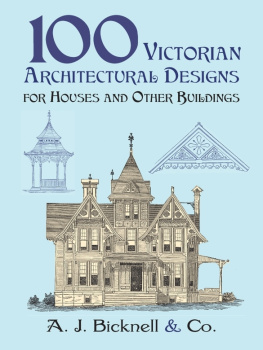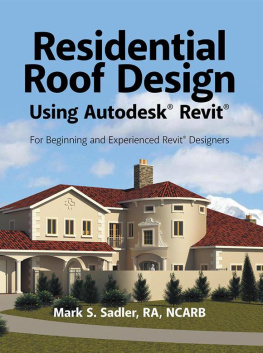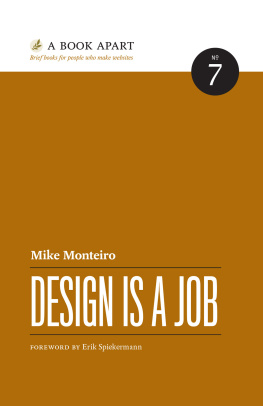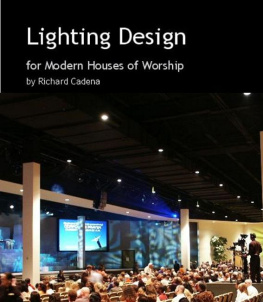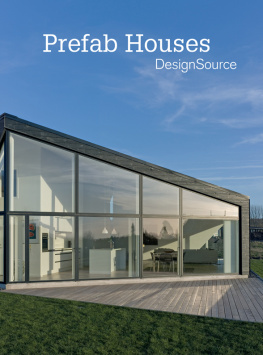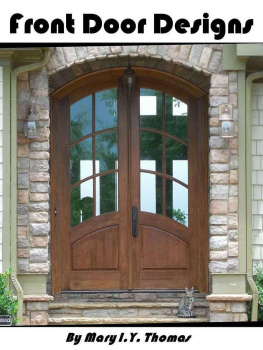The Architects Guide to Residential Design
The Architects Guide to Residential Design
Michael Malone, AIA


Copyright 2010 by McGraw-Hill Companies, Inc. All rights reserved. Except as permitted under the United States Copyright Act of 1976, no part of this publication may be reproduced or distributed in any form or by any means, or stored in a data base or retrieval system, without the prior written permission of the publisher.
ISBN: 978-0-07-160564-9
MHID: 0-07-160564-9
The material in this eBook also appears in the print version of this title: ISBN: 978-0-07-160563-2, MHID: 0-07-160563-0.
All trademarks are trademarks of their respective owners. Rather than put a trademark symbol after every occurrence of a trademarked name, we use names in an editorial fashion only, and to the benefit of the trademark owner, with no intention of infringement of the trademark. Where such designations appear in this book, they have been printed with initial caps.
McGraw-Hill eBooks are available at special quantity discounts to use as premiums and sales promotions, or for use in corporate training programs. To contact a representative please e-mail us at bulksales@mcgraw-hill.com.
Information contained in this work has been obtained by The McGraw-Hill Companies, Inc. (McGraw-Hill) from sources believed to be reliable. However, neither McGraw-Hill nor its authors guarantee the accuracy or completeness of any information published herein, and neither McGraw-Hill nor its authors shall be responsible for any errors, omissions, or damages arising out of use of this information. This work is published with the understanding that McGraw-Hill and its authors are supplying information but are not attempting to render engineering or other professional services. If such services are required, the assistance of an appropriate professional should be sought.
TERMS OF USE
This is a copyrighted work and The McGraw-Hill Companies, Inc. (McGraw-Hill) and its licensors reserve all rights in and to the work. Use of this work is subject to these terms. Except as permitted under the Copyright Act of 1976 and the right to store and retrieve one copy of the work, you may not decompile, disassemble, reverse engineer, reproduce, modify, create derivative works based upon, transmit, distribute, disseminate, sell, publish or sublicense the work or any part of it without McGraw-Hills prior consent. You may use the work for your own noncommercial and personal use; any other use of the work is strictly prohibited. Your right to use the work may be terminated if you fail to comply with these terms.
THE WORK IS PROVIDED AS IS. McGRAW-HILL AND ITS LICENSORS MAKE NO GUARANTEES OR WARRANTIES AS TO THE ACCURACY, ADEQUACY OR COMPLETENESS OF OR RESULTS TO BE OBTAINED FROM USING THE WORK, INCLUDING ANY INFORMATION THAT CAN BE ACCESSED THROUGH THE WORK VIA HYPERLINK OR OTHERWISE, AND EXPRESSLY DISCLAIM ANY WARRANTY, EXPRESS OR IMPLIED, INCLUDING BUT NOT LIMITED TO IMPLIED WARRANTIES OF MERCHANTABILITY OR FITNESS FOR A PARTICULAR PURPOSE. McGraw-Hill and its licensors do not warrant or guarantee that the functions contained in the work will meet your requirements or that its operation will be uninterrupted or error free. Neither McGraw-Hill nor its licensors shall be liable to you or anyone else for any inaccuracy, error or omission, regardless of cause, in the work or for any damages resulting there from. McGraw-Hill has no responsibility for the content of any information accessed through the work. Under no circumstances shall McGraw-Hill and/or its licensors be liable for any indirect, incidental, special, punitive, consequential or similar damages that result from the use of or inability to use the work, even if any of them has been advised of the possibility of such damages. This limitation of liability shall apply to any claim or cause whatsoever whether such claim or cause arises in contract, tort or otherwise.
This book is for my children Meredyth, Max, Riley,
and Carlie, who compete for my attention with my practice and
the houses which are my other, much needier children. The experiences
in this book would be impossible but for Gary and Sandra,
who lit the torch, and Amy, who carries it.
About the Author
Michael Malone, AIA, is Director of the Michael Malone Studio at WKMC Architects in Dallas, Texas. In his capacity as a design principal for a 40-person architectural firm, he leads and coordinates design for single- and multifamily residences, specialty retail, commercial offices, and corporate marketing centers. Mr. Malones client roster includes EDS, Lockheed Martin, Shell Oil Company, Harrahs Casinos, and the Discovery Channel. He has contributed to several publications and has written articles and columns for professional and industry magazines such as Texas Architect, Metal Architecture, and Exhibit Builder. The Architects Guide to Residential Design is based on a well-received presentation that Mr. Malone first introduced at the 2006 annual convention of the Texas Society of Architects. A graduate of Auburn University and University of Texas at Arlington, he lives in Dallas with his wife Amy and four children Meredyth, Max, Riley, and Carlie.
Contents
Preface
A casual survey of why people become architects will inevitably lead to an early interest in or passion for the design of houses. It is therefore surprising to many people that not all architects design houses. Single-family residential design is something most architects feel they have the skills and knowledge to do effectively, but the reality is few of us make an ongoing practice of it and even fewer can earn a meaningful living doing it. I knowI try to do it every day and it is tough.
This book had its start as an answer to a question. A good friend of mine, Tim, got the opportunity to do what all of us architects (and a lot of nonarchitects) dream ofdesign and build his own house. Tim enjoys a successful architectural career working almost exclusively on commercial projects. Using this experience and his considerable organizational skills, he designed his house in an orderly manner that reflected everything hed learned about how to lay out and plan an efficient building. Using the careful assumptions any of us would make when planning for economy and efficiency, he arranged the rooms in a compact mass with a minimum of exterior surface area. He utilized standard sizes of lumber and masonry when laying out and organizing his elevations. He avoided curves, expensive finishes, and difficult details. He stacked his plumbing in a logical manner, minimized lighting fixtures, and oriented the house to minimize solar gain while maximizing opportunities for natural lighting. He reviewed his completed drawings carefully with a responsible contractor with a reputation for fair pricing and an acceptable level of quality and provided cut sheets and data for all the materials he thought necessary, so as to leave no questions unanswered and to avoid gray areas that could lead to higher or incomplete pricing. A few weeks later, the contractor called him with news that his bid number was ready and a meeting was arranged to review the pricing.
That night Tim (and his wife), for the first time in his professional career, was on the receiving end of a cost estimate that was significantly over budget. Hed been in the room as a consultant many times when a client reacted with shock when a bid or budget price for a building project came in high, and he was adept at all the things to say to handle damage control. But in this case it was his own house, his own money! He was the client and the partner in this particular business deal was his wife, who immediately brought into question his professional competence. How could he design a house so far over budget and not know it?
Next page







